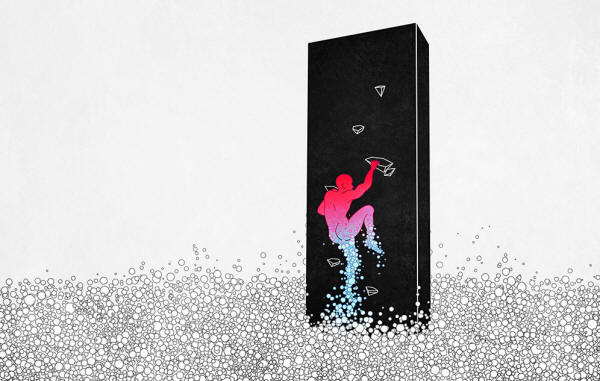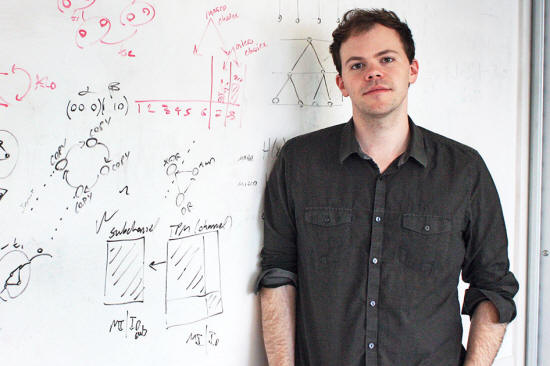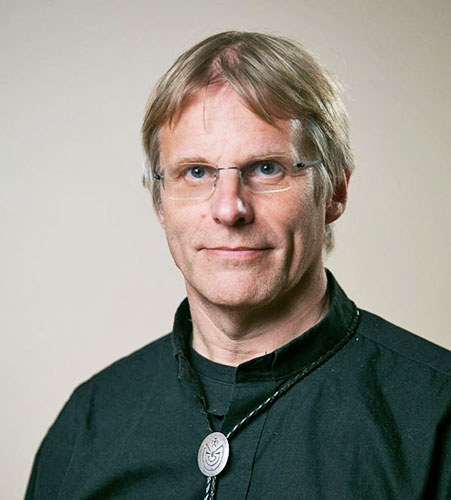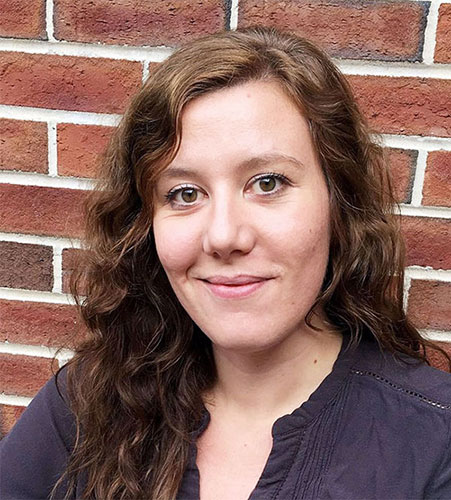|
from QuantaMagazine Website
Quanta Magazine
contrary to conventional scientific wisdom, conscious beings and other macroscopic entities might have greater influence over the future than does the sum of
their microscopic components.
Erik Hoel, a 29-year-old theoretical neuroscientist and writer, quoted the passage in a recent essay (Agent Above, Atom Below - How agents causally emerge from their underlying microphysics) in which he laid out his new mathematical explanation of how consciousness and agency arise.
The existence of agents - beings with intentions and goal-oriented behavior - has long seemed profoundly at odds with the reductionist assumption that all behavior arises from mechanistic interactions between particles.
Agency doesn't exist among the atoms, and so reductionism suggests agents don't exist at all: that Romeo's desires and psychological states are not the real causes of his actions, but merely approximate the unknowably complicated causes and effects between the atoms in his brain and surroundings.
Hoel's theory, called "causal emergence," roundly rejects this reductionist assumption.
Erik Hoel, a theoretical neuroscientist
at Columbia University.
Using the mathematical language of information theory, Hoel and his collaborators claim to show that new causes - things that produce effects - can emerge at macroscopic scales.
They say coarse-grained macroscopic states of a physical system (such as the psychological state of a brain) can have more causal power over the system's future than a more detailed, fine-grained description of the system possibly could.
Macroscopic states, such as desires or beliefs,
Hoel and collaborators have been developing the mathematics behind their idea since 2013.
In a May paper (When the Map is Better Than the Territory) in the journal Entropy, Hoel placed causal emergence on a firmer theoretical footing by showing that macro scales gain causal power in exactly the same way, mathematically, that error-correcting codes increase the amount of information that can be sent over information channels.
Just as codes reduce noise (and thus uncertainty) in transmitted data - Claude Shannon's 1948 insight that formed the bedrock of information theory - Hoel claims that macro states also reduce noise and uncertainty in a system's causal structure, strengthening causal relationships and making the system's behavior more deterministic.
Ellis thinks causal emergence could account for many emergent phenomena such as superconductivity and topological phases of matter.
Collective systems like bird flocks and superorganisms - and even simple structures like crystals and waves - might also exhibit causal emergence, researchers said.
The work on causal emergence is not yet widely known among physicists, who for centuries have taken a reductionist view of nature and largely avoided further philosophical thinking on the matter. But at the interfaces between physics, biology, information theory and philosophy, where puzzles crop up, the new ideas have generated excitement.
Their ultimate usefulness in explaining the world and its mysteries - including consciousness, other kinds of emergence, and the relationships between the micro and macro levels of reality - will come down to whether Hoel has nailed the notoriously tricky notion of causation:
A Theory of Cause
In a fatal drunk driving accident, what's the cause of death?
Doctors name a ruptured organ, while a psychologist blames impaired decision-making abilities and a sociologist points to permissive attitudes toward alcohol.
Biologists, chemists and physicists, in turn, see ever more elemental causes.
The true causes, to a physicist, are the fundamental forces acting between particles; all effects ripple out from there. Indeed, these forces, when they can be isolated, appear perfectly deterministic and reliable - physicists can predict with high precision the outcomes of particle collisions at the Large Hadron Collider, for instance.
In this view, causes and effects become hard to predict from first principles only when there are too many variables to track.
Furthermore, philosophers have argued that causal power existing at two scales at once would be twice what the world needs; to avoid double-counting, the "exclusion argument" says all causal power must originate at the micro level.
But it's almost always easier to discuss causes and effects in terms of macroscopic entities.
When we look for the cause of a fatal car crash, or Romeo's decision to start climbing,
Friendly and large-limbed, Hoel grew up reading books at Jabberwocky, his family's bookstore in Newburyport, Massachusetts.
He studied creative writing as an undergraduate and planned to become a writer. (He still writes fiction and has started a novel.) But he was also drawn to the question of consciousness - what it is, and why and how we have it - because he saw it as an immature scientific subject that allowed for creativity.
For graduate school, he went to Madison, Wisconsin, to work with Giulio Tononi - the only person at the time, in Hoel's view, who had a truly scientific theory of consciousness.
Tononi conceives of consciousness as information: bits that are encoded not in the states of individual neurons, but in the complex networking of neurons, which link together in the brain into larger and larger ensembles.
Tononi argues that this special "integrated information" corresponds to the unified, integrated state that we experience as subjective awareness. Integrated information theory has gained prominence in the last few years, even as debates have ensued about whether it is an accurate and sufficient proxy for consciousness.
But when Hoel first got to Madison in 2010, only the two of them were working on it there.
Giulio Tononi, a neuroscientist and psychiatrist at the University of Wisconsin, Madison,
best known for his research on sleep and consciousness.
Tononi tasked Hoel with exploring the general mathematical relationship between scales and information.
The scientists later focused on how the amount of integrated information in a neural network changes as you move up the hierarchy of spatiotemporal scales, looking at links between larger and larger groups of neurons.
They hoped to figure out which ensemble size might be associated with maximum integrated information - and thus, possibly, with conscious thoughts and decisions. Hoel taught himself information theory and plunged into the philosophical debates around consciousness, reductionism and causation.
Hoel soon saw that understanding how consciousness emerges at macro scales would require a way of quantifying the causal power of brain states.
He realized, he said, that,
He also read the works of the computer scientist and philosopher Judea Pearl, who developed a logical language for studying causal relationships in the 1990s called causal calculus.
With Larissa Albantakis and Tononi, Hoel formalized a measure of causal power called "effective information," which indicates how effectively a particular state influences the future state of a system.
(Effective information can be used to help calculate integrated information, but it is simpler and more general and, as a measure of causal power, does not rely on Tononi's other ideas about consciousness.)
The researchers showed that in simple models of neural networks, the amount of effective information increases as you coarse-grain over the neurons in the network - that is, treat groups of them as single units. The possible states of these interlinked units form a causal structure, where transitions between states can be mathematically modeled using so-called Markov chains.
At a certain macroscopic scale, effective information peaks:
Coarse-grain further, and you start to lose important details about the system's causal structure.
Tononi and colleagues hypothesize that the scale of peak causation should correspond, in the brain, to the scale of conscious decisions; based on brain imaging studies, Albantakis guesses that this might happen at the scale of neuronal microcolumns, which consist of around 100 neurons. Causal emergence is possible, Hoel explained, because of the randomness and redundancy that plagues the base scale of neurons.
As a simple example, he said to imagine a network consisting of two groups of 10 neurons each. Each neuron in group A is linked to several neurons in group B, and when a neuron in group A fires, it usually causes one of the B neurons to fire as well.
Exactly which linked neuron fires is unpredictable.
If, say, the state of group A is {1,0,0,1,1,1,0,1,1,0}, where 1s and 0s represent neurons that do and don't fire, respectively, the resulting state of group B can have myriad possible combinations of 1s and 0s.
On average, six neurons in group B will fire, but which six is nearly random; the micro state is hopelessly indeterministic.
Now, imagine that we coarse-grain over the system, so that this time, we group all the A neurons together and simply count the total number that fire. The state of group A is {6}.
This state is highly likely to lead to the state of group B also being {6}. The macro state is more reliable and effective; calculations show it has more effective information.
A real-world example cements the point.
For any given system, effective information peaks at the scale with the largest and most reliable causal structure.
In addition to conscious agents, Hoel says this might pick out the natural scales of rocks, tsunamis, planets and all other objects that we normally notice in the world.
Brain-imaging experiments are being planned in Madison and New York, where Hoel has joined the lab of the Columbia neuroscientist Rafael Yuste.
Both groups will examine the brains of model organisms to try to home in on the spatiotemporal scales that have the most causal control over the future. Brain activity at these scales should most reliably predict future activity.
As Hoel put it,
If the data support their hypothesis, they'll see the results as evidence of a more general fact of nature.
New Philosophical Thinking
Sara Walker, a physicist and astrobiologist at Arizona State University who studies the origins of life, hopes measures like effective information and integrated information will help define what she sees as the gray scale leading between nonlife and life (with viruses and cell cycles somewhere in the gray area).
Walker has been collaborating with Tononi's team on studies of real and artificial cell cycles, with preliminary indications that integrated information might correlate with being alive.
In other recent work, the Madison group has developed a way of measuring causal emergence called "black-boxing" that they say works well for something like a single neuron.
A neuron isn't simply the average of its component atoms and so isn't amenable to coarse-graining.
Black-boxing is like putting a box around a neuron and measuring the box's overall inputs and outputs, instead of assuming anything about its inner workings.
Walker is also a fan of Hoel's new work tracing effective information and causal emergence to the foundations of information theory and Shannon's noisy-channel theorem.
Robert Bishop, a philosopher and physicist at Wheaton College, said,
Hoel's measure has the charm of being simple, reflecting only reliability and the number of causal relationships, but according to Bishop, it could be one of several proxies for causation that apply in different situations.
Hoel's ideas do not impress Scott Aaronson, a theoretical computer scientist at the University of Texas, Austin. He says causal emergence isn't radical in its basic premise.
After reading Hoel's recent essay for the Foundational Questions Institute, "Agent Above, Atom Below" (the one that featured Romeo and Juliet), Aaronson said,
It didn't seem so obvious to others, given how the exclusion argument has stymied efforts to get a handle on higher-level causation.
Hoel says his arguments go further than Aaronson acknowledges in showing that,
Larissa Albantakis, a theoretical neuroscientist
at the University of
Wisconsin, Madison.
Moreover, causal emergence isn't merely a claim about our descriptions or "causal stories" about the world, as Aaronson suggests.
Hoel and his collaborators aim to show that higher-level causes - as well as agents and other macroscopic things - ontologically exist.
The distinction relates to one that the philosopher David Chalmers makes about consciousness:
She says it's possible that effective information could,
The criticism that hits Hoel and Albantakis the hardest is one physicists sometimes make upon hearing the idea:
One rejoinder is that perfect knowledge of the universe isn't possible, even in principle.
But even if the universe could be thought of as a single unit evolving autonomously, this picture wouldn't be informative.
Causation,
Treating causes as real is a necessary tool for making sense of the world.
Maybe we sort of knew all along, as Aaronson contends, that higher scales wrest the controls from lower scales.
But if these scientists are right, then causal emergence might be how that works, mathematically.
|





